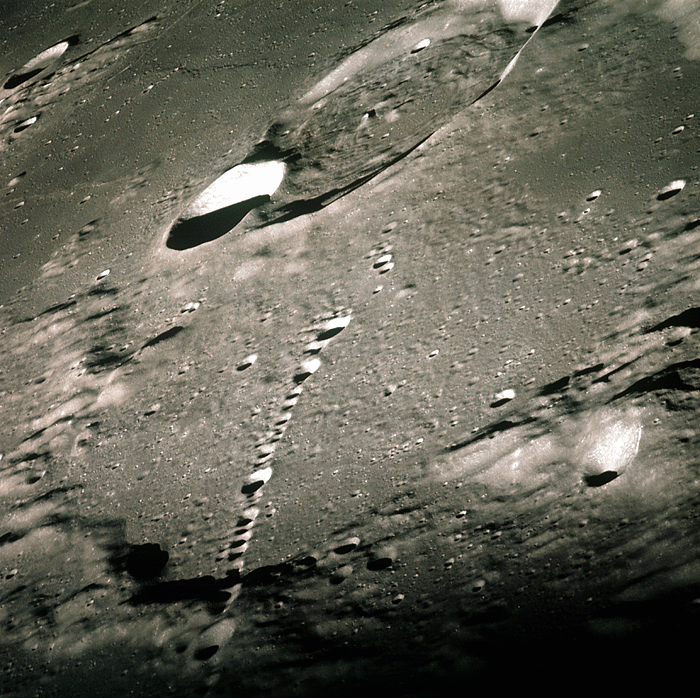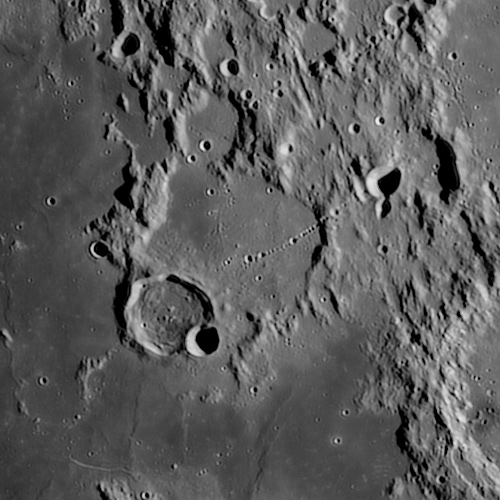-
Posts
53,874 -
Joined
-
Last visited
-
Days Won
458
Content Type
Profiles
Forums
Gallery
Events
Blogs
Posts posted by John
-
-
That looks very similar / the same as the Skywatcher 2 inch dielectric and also the Opticron one, which FLO sold a few years back. I'm sure it would work well with a 4 inch F/10 achromat such as the TAL 100.
It's probably very nearly as good, maybe just as good, as the Altair one.
Edit: check that the 2 inch diagonal will actually come to focus in the TAL 100. I've known of TAL's with the sort of focuser yours has, where even though they would take a 2 inch diagonal, you could not get an eyepiece to focus in it !
-
Something else that has occurred to me is that we are reaching the end of a period of several years when the planets that we love to observe most (ie: Mars, Saturn and Jupiter) have not been well placed for observing from the UK - generally low in the sky.
Jupiter is looking better now and Saturn and Mars will slowly get better placed as well.
I found that observing the planets when they were low in the sky was quite a different proposition, scope choice-wise, than when they were high in the sky, as they were when I was observing them 20 years or so back. My refractors took over from my 10 and 12 inch dobsonians because they were able to provide better views and cut through the shaky seeing and the additional atmosphere thickness. There was a period of a couple of years when I gave up using my 12 inch dob for observing these planets altogether.
I guess what I'm suggesting is that what has delivered the best planetary observing for the past 5-6 years or so may not be the optimum instruments for the future, or at least might have any edge that they had in the past few years removed by more favourable planet positions allowing newtonians, SCT's and maks to deliver more of the benefits that their additional aperture suggests they have the potential to do.
Just a thought 🙂
-
 3
3
-
-
Very interesting topic, as someone who owns and uses complex eyepieces with large glass in them.
I've always tended to keep them just above ambient temperature to avoid misting / dewing when I come to use them (which, when it has occurred, out in the field, has been very annoying).
I'm not aware of any performance issues arising from my approach but I suppose I'd have to run a comparison between a cooled eyepiece and one just above ambient to find out. Given that the eyepieces would need to be the same design and focal length to get a meaningful comparison, this might prove tricky to arrange 🙄
Perhaps it's a trade off situation - a small impact for a short time on view quality while the eyepiece cools VS the risk / inconvenience of fogging / misting as the warm eye gets close to the eye lens of a cool eyepiece.
I guess the jury is out on this one ?
-
 2
2
-
-
6 hours ago, bingevader said:
But not much good a mowing the grass, judging by that scythe.

They all look like pretend implements looking more closely. Probably just as well not to let them near sharp objects (or laser pointers) 🙄
-
1 hour ago, Replayy said:
Yeah I put the eyepiece in there but the image is really blurry sorry forgot to say I actually put it in.
I put it in and wheeled the sides down and up and nothing seem to get a clear image
The tube that is pictured sat on the dust cap of the scope needs to be fitted into the focuser and then the eyepiece goes into that. Apologies if you already know that !
Astro newtonians generally can't focus on things closer than a couple of hundred metres away so your test targets need to be a good way away to enable the scope to reach focus.
-
1 hour ago, Flame Nebula said:
.....I certainly wouldn't have said anything like that to a poster, or 'liked' the comment either, which effectively condones it, and adds to the non friendly atmosphere.....
Fair enough - your point is taken.
I "liked" that post but I've also contributed to this and your other threads so I hope that demonstrates a willingness to help as well.
You have had contributions to this and your other threads from some of the most experienced folks on the forum. I think sometimes, a supplementary question back to the original poster is justified to sound out the purpose of a question or topic - that then helps "fine tune" responses I feel.
Some of the topics you have started seem to be going over the same or similar ground so perhaps a sense of "deja vu" sets in ?
Hope you are getting somewhere with your decision making anyway 🙂
-
 4
4
-
-
28 minutes ago, Elp said:
Funnily enough (though it is an imaging comparison):
https://youtu.be/grH0O3RekgU?si=Q4hM1fYv3DtFfNv7
https://youtu.be/1ZCSPwM5_Hg?si=hpIJpRHGA5v5bWC1
The poster of those is a long standing member here. Perhaps he can chip in personally ? 🙂
Maybe he actually looked through the scopes as well ?
-
 2
2
-
-
19 minutes ago, Elp said:
Just replying to another thread saw this, but it's an imaging comparison so mileage will vary but generally shows the consensus:
Thats interesting.
I'm not an imager of any sort but when I look at the stills of the moon in the side by side comparison, from the perspective of a visual observer, I see pretty equal resolution and sharpness but the contrast between the lighter and darker areas on the surface seems more enhanced in the refractor.
Whether that would be replicated in purely visual use, I don't know though.
-
 1
1
-
-
10 minutes ago, IB20 said:
Probably nothing but I prefer refractor views for most targets. DSOs and planetary nebulae are what I find the big newts excel on.
Yep. Thats where I am on this I think 👍
-
 1
1
-
-
I don't think the perpetrator is typical of the majority of Somerset folk, thankfully 🙄
We are generally quite normal and well behaved down here in the SW 🙂

-
 5
5
-
 7
7
-
-
4 hours ago, AstroNebulee said:
That's a cracking image and lovely seeing that line of craters. Not seen that before. Thank you.
Lee
Thanks Lee - I have to confess that one is not my image though. I just look and let others with the skills and patience take the pictures 🙂
This one I can credit: Apollo 12 Command Module, 21 November 1969:

-
 9
9
-
-
A Vixen Porta II is quite light. I found the Porta I coped with my 102mm F/6.5 ED quite well.
The AZ-5 or AZ-4 on an aluminium tripod might do the job too.
-
 1
1
-
-
Nice sketches David 👍
I wonder what the view would be like from the surface at that time, looking across the crater floor towards the "gap" ? 🙂
Hesiodus A is worth a look when it's floor is illuminated - it's one of the best "double walled" craters to observe:

-
 3
3
-
 1
1
-
-
24 minutes ago, John said:
Interesting effect - my eye shows this looking more like Friar Tuck with my Tak 100 just now !
I'm probably looking at it from the wrong angle 🙄
I was looking at this angle - a different type of "face" - shows what tricks the mind can do with light and shadow !

-
 3
3
-
-
Interesting effect - my eye shows this looking more like Friar Tuck with my Tak 100 just now !
I'm probably looking at it from the wrong angle 🙄
Maybe I need another 28mm aperture to get the wolf ? 😁
-
 2
2
-
-
8 minutes ago, John said:
The so-called "straight wall" is not so straight under good seeing at 250x 😉
I can see why it's sometimes known as Huygens's Sword tonight.
Also, not far from the Rupas Recta, the crater Davy and it's famous chain of tiny pits - the Catena Davy. The larger ones resolvable with the 100mm frac, the smaller ones hinted at and form the curving line. Another of my favourites 🙂

-
 13
13
-
-
The so-called "straight wall" is not so straight under good seeing at 250x 😉
I can see why it's sometimes known as Huygens's Sword tonight.
-
 7
7
-
-
I've just managed to catch some of this event with a hurried deployment of my Tak FC100-DL after completely forgetting about it.
Nice to see at least some of the effect.
Thanks to @dweller25 for "bumping" the original thread as a memory jogger - my memory seemed to need more "jogging" than usual this evening though 🙄
Hats off to the Tak as well for being able to give sharp views at 250x straight out of the house !
-
 6
6
-
-
It looks like one of the Beacon Hill Telescopes newtonians and their standard equatorial mount.
The finder looks like an early Orion Optics one.
Actually, the mount could be an old Orion Optics one as well - they were very similar to the Beacon Hill mounts.
I'd guess that it dates from the 1980's ?
The tripod is a photo one, not an original part. It's not going to do the scope and mount any favours at all in all honesty.
-
16 minutes ago, bosun21 said:
Why a doublet over a triplet for visual John?
Cool down time and weight / balance. Triplets can be front heavy and tend to be heavier overall. Also, it's been known for a good ED doublet to have better colour correction than a triplet 😉
I need all my setups to be as portable as possible so weight is important.
Also, within a given price bracket, I reckon you have more chance of getting 4 good optical surfaces than 6. Probably me being pessimistic though !
-
 6
6
-
-
Superb lunar views at the moment 😁
Lovely fine detail such as the Rima Hadley cutting across the plain beneath Mons Hadley. The area of the landing site of Apollo 15 clearly on view.
I'm working on the basis that the Svbony zoom at 3mm is really giving around 3.5mm so that's 257x in the ED120 and sharp, sharp, sharp 🙂

-
 16
16
-
-
4 hours ago, John said:
Tonight looks quite good here, after 9:00 pm 🤞
Only just managed to get the ED120 outside now after a busy evening. Hope it stays clear for a while longer 🙂
The moon looks pretty splendid and it's pretty much right overhead so the seeing is good and steady.
-
 4
4
-
-
As purely a visual observer I would go for a doublet I think. There are quite a few very positive reviews out there of the 125mm Stellamira and the same scope under different branding.
The weight of the Stellamira makes it appealing to me as well.
-
 1
1
-
-
6 hours ago, Mr Spock said:
Some clear sky here but occasional showers and 45+mph winds put me off. Next few nights look promising though.
Tonight looks quite good here, after 9:00 pm 🤞














What have you seen in a 5" Refractor, that you've not seen in an 8" newt?
in Observing - Discussion
Posted
I have only briefly looked through a newish ED120. Mine is one of the very early ones (gold tube / cream trim) and is an excellent scope. The newer one seemed good too but it was only a short look that I had. No chance of a proper comparison.
It's quite possible that the coatings have changed during the life of the model (around 18 years and counting I think) but I don't think the glass types used in the objective will have changed.